”I’ve always had a duck personality. Calm above water, feet going crazy below. “ K. Flay

Querétaro Day 3…A Roman-style aqueduct in the middle of a Mexican metropolis? Sure, why not.
One of a small handful of Spanish colonial aqueduct bridges still standing in Mexico, The 75-arched stone behemoth, which crosses over the Pan-American Highway at one point, supplied Querétaro’s capital city with drinking water well into the 20th century and, to this day, still supplies water to the fountains scattered about the old city.
Completed in 1738, legend has it that the aqueduct was commissioned by the Marquis del Villa del Alguia as a grandiose testament of his undying love for a beautiful — yet unattainable — woman named Clarissa. You see, Clarissa just happened to be a nun belonging to the convent of Santa Clara. The story goes she promised him that after the aqueduct was finished she will mention his name in her bedroom every night…..the Marquis finished the aqueduct and she kept her promise, she prayed for him every night.
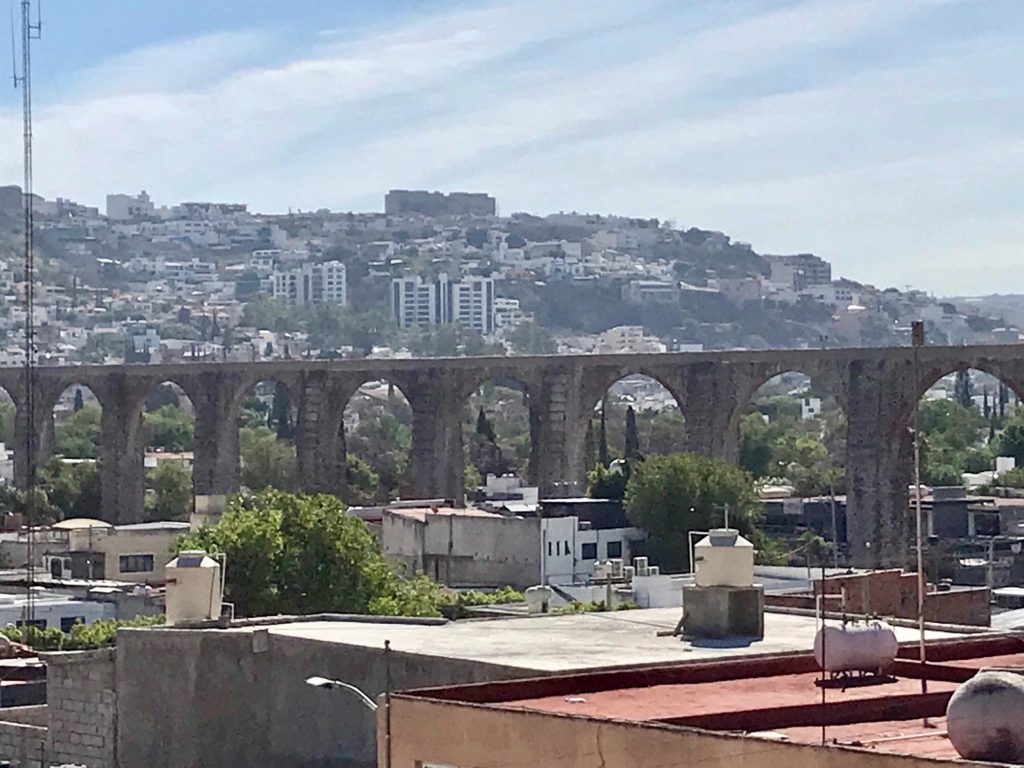
The aqueduct ends at The Temple of the Holy Cross and the Convento of Santa Cruz; its history is intimately tied to the history of Querétaro itself. The church was first established as a small chapel in 1531 and was built at the site where it is believed that a vision of the Holy Cross was witnessed upon the culmination of a bloody battle between the Chichimecas and Spaniards. The chapel was later replaced by the existing church and convent in the 17th Century.
The Temple of the Holy Cross is richly adorned with carvings, paintings, and architectural details that together create a vision of beauty and grace. The neo-classical and Baroque altarpieces are particularly noteworthy, as is the miraculous tree within the convent which bears thorns that are shaped like crosses.
Legend says that during his evangelizing mission, Fray Antonio Margil of Jesus took long walks leaning on a dry, lifeless stick. During his stay at the convent, he buried it in one of the orchards and it sprouted a tree that bears thorns in the form of a cross. Amazingly some have 3 spines attached to them to simulate the nails of the crucifixion.
Templo de Santa Rosa de Viterbo is the maximum expression of baroque in Querétaro of the eighteenth century, and one of the most representative thanks to its architecture and the elaborate work of its altarpieces. Its walls contain more than 200 years of history and unparalleled works of art. Inside, you will be surprised by the elaborate work of the five altarpieces carved in wood and completely covered with a layer of genuine gold. The pulpit shows rich ornamentation inlaid with precious woods, ivory, silver, and hawksbill. The former convent, which has been part of a long and meticulous restoration process, is now the headquarters of the Querétaro Institute of Culture and the Arts.
Dinner tonite at Di Vino, an Italian restaurant in the old town, a charming space inside an old Casona. We sat in the open courtyard surrounded by balconies with overhung greenery. My old-time favorite wine is a little-known Sicilian grape called Nero D’Avola … to our shocking surprise there were 5 vintages on the wine list – usually, we are lucky to find one. Our selection was made after consultation with the wine sommelier and the perfect bottle chosen. We shared a grilled Caesar salad and black ink risotto topped with grilled calamari strips. Mexican beef cuts and flavors are totally different from the US, so the few times David has ordered it, he has been disappointed. This was a juicy, perfectly grilled New York steak – it hit the bullseye – I was almost tempted. My choice: Parrillada Del Mar, a bounty of the sea on a 14” plate…….wait there is more – a lemon and ginger tart topped with the lightest of merengues.
We walked through people filled plazas and crashed happily into bed.
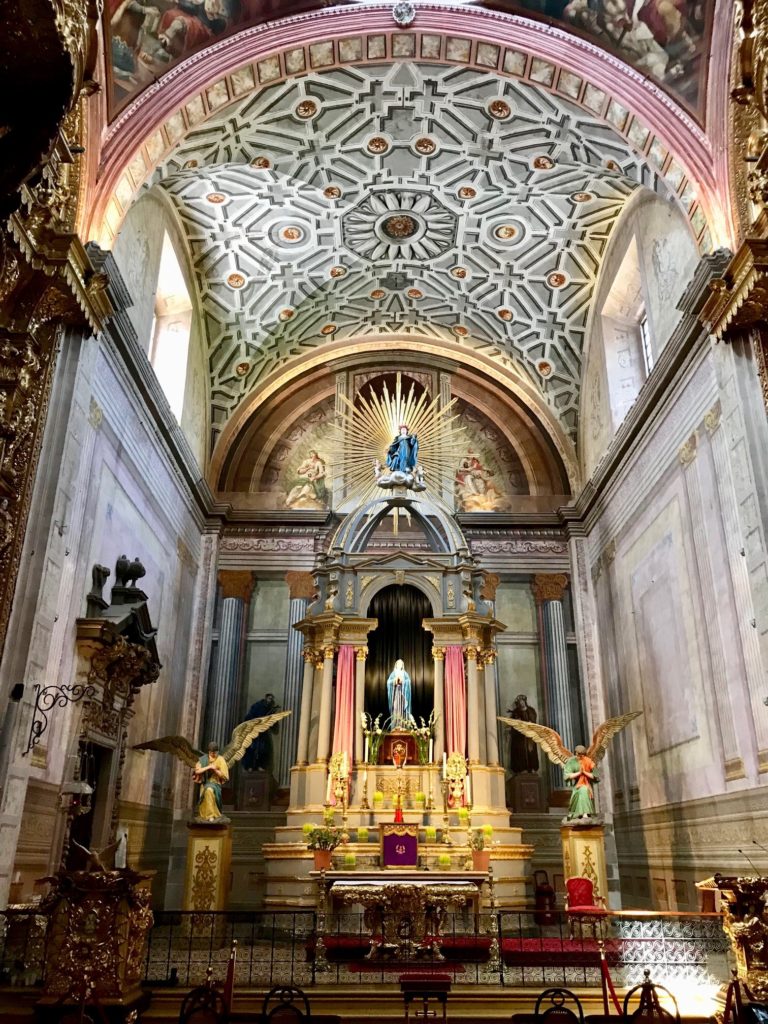

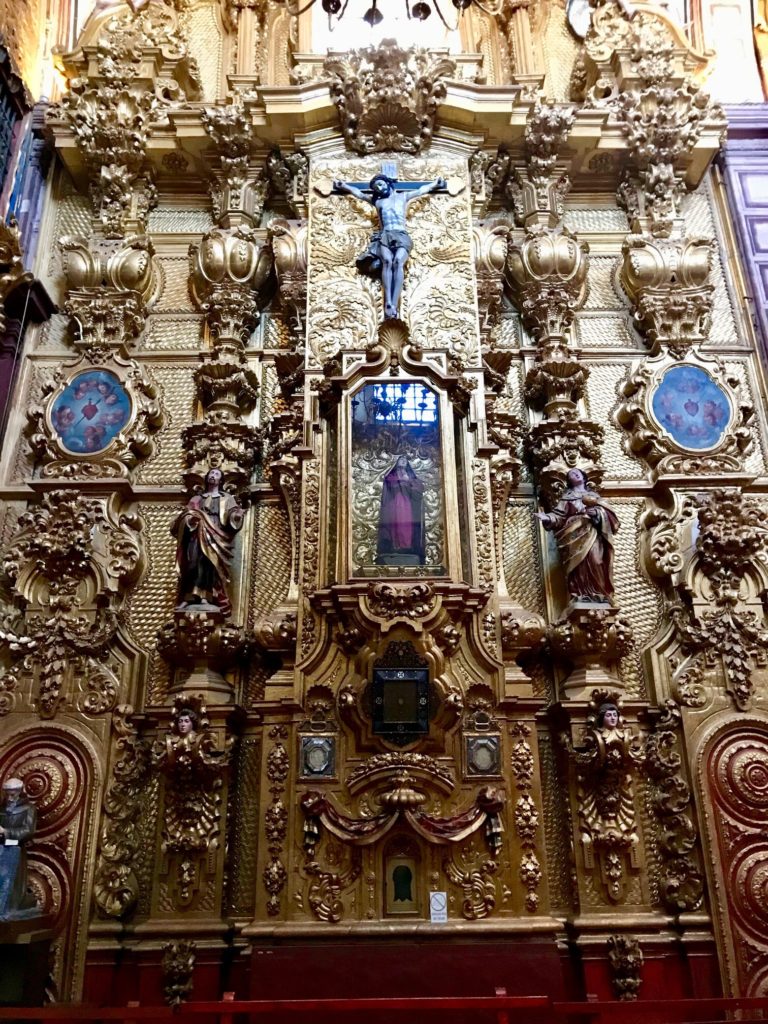
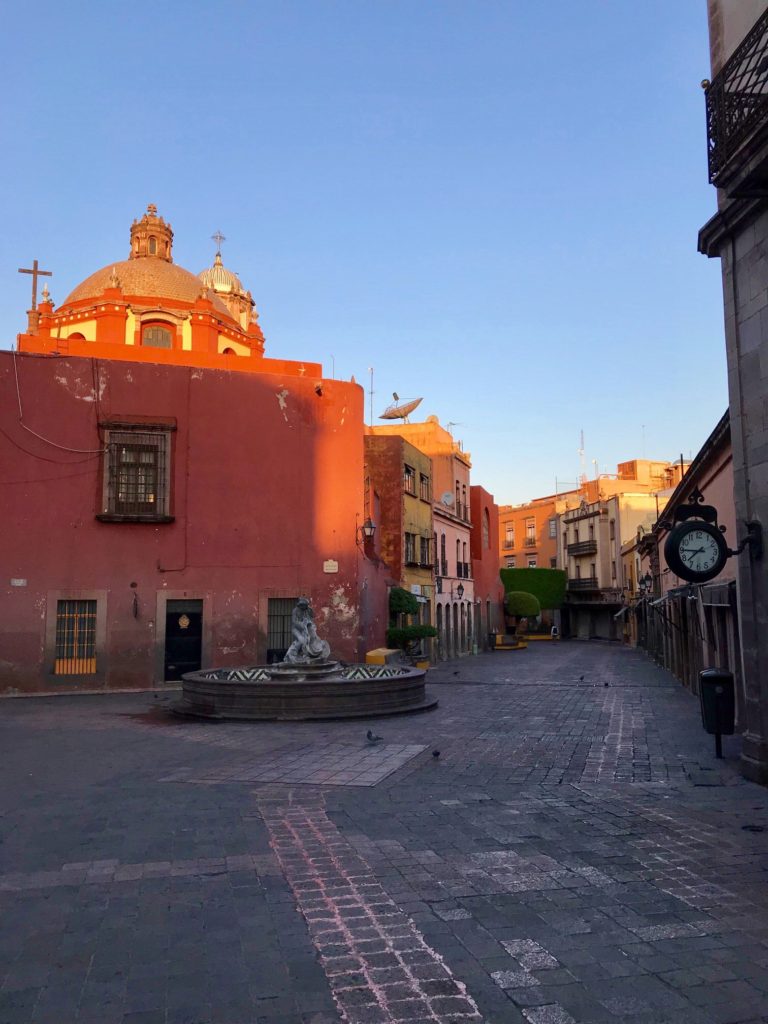





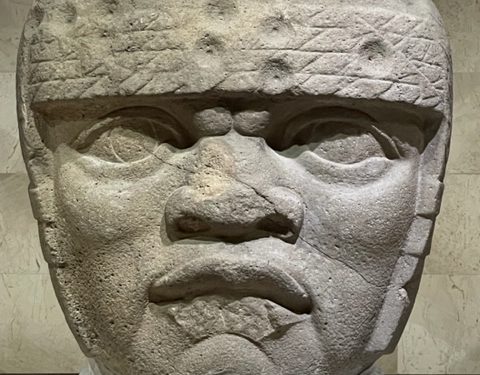
Querétaro is quintessentially picturesque, with its beautifully preserved colonial architecture and aqueduct. Amazing that an aqueduct completed in 1738 still carries water to Querétaro’s fountains.
Temple Santa de Rosa’s altarpieces and ornate walls are stunning.
Will seek out Di Vino Italian restaurant!